How to grow blueberries: expert tips for these tasty fruits
Find out how to grow blueberries and cultivate your own stunning superfruits for years of delicious harvests

Laura Crombie
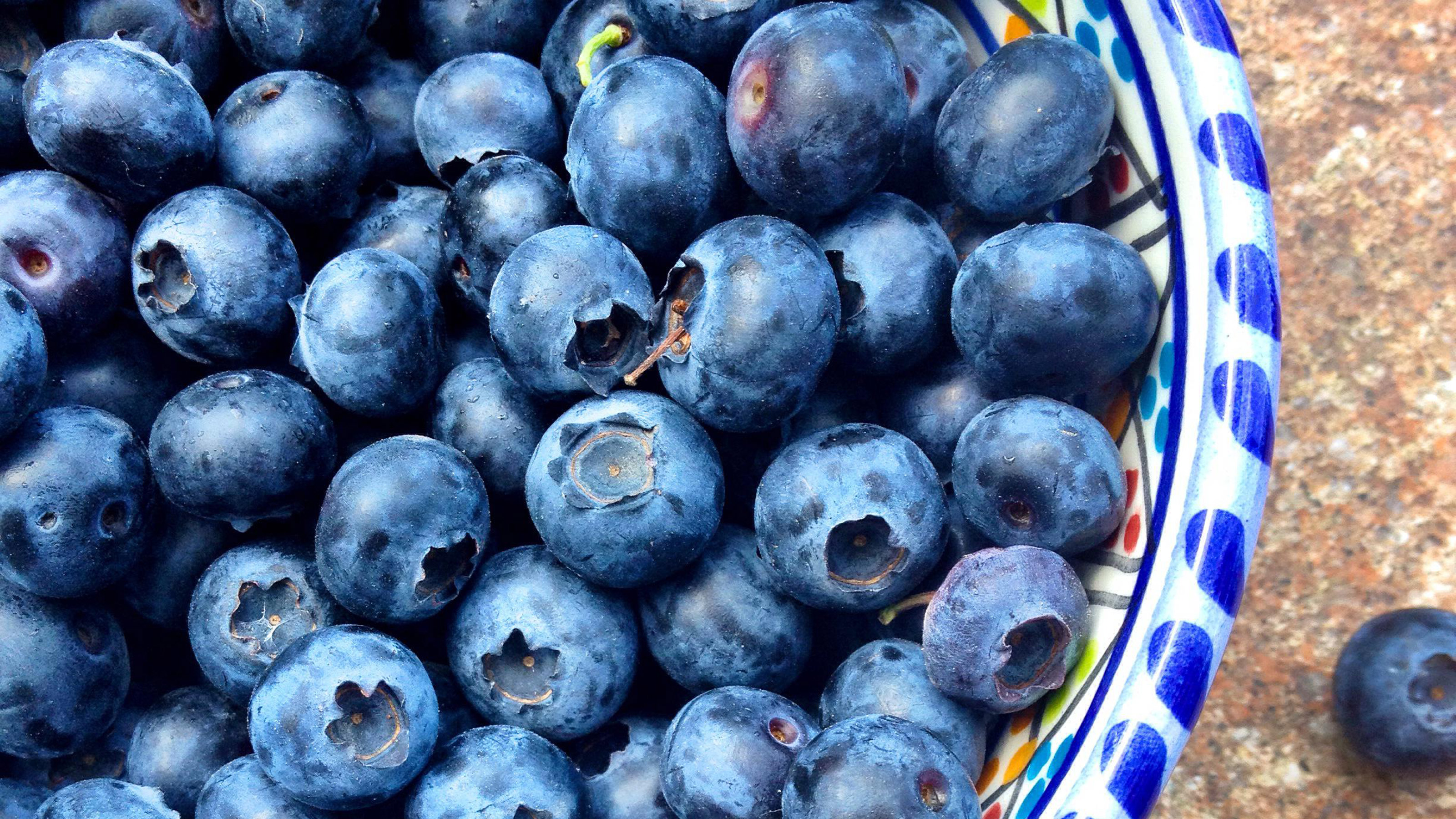
If you’re tempted to find out how to grow blueberries, you’ve probably heard about their impressive ‘superfood’ credentials. It’s true, they are packed with vitamins, minerals and antioxidants, as well as being super-low in calories. These berries lower blood pressure, fight cancer, reduce cholesterol and boost memory. All that, and they taste sublime – and add an unusual pop of color to your fruit-growing exploits.
What might be surprising is how easy it is to grow blueberries. Most varieties maintain a manageable size, making them ideal for small kitchen garden ideas, containers and patios. Their needs are modest once you’ve mastered the basics about their soil and water preferences. And given the range of varieties available, you can mix and match early and late-fruiting breeds for weeks of berry bliss.
As fruit growing expert Lucy Chamberlain points out, there are dozens of varieties within the blueberry genus Vaccinium. Your biggest decision is choosing just a couple to try first. There are compact, hardy lowbush types like ‘Top Hat’ (V. angustifolium) and highbush breeds (V. corymbosum) that reach 5ft high, says Lucy. The highbush group includes southern types that require little winter chill (‘Sunshine Blue’ and ‘Ozarkblue’) and northern varieties like ‘Duke’ and ‘Chandler’ that need extended cold periods. Alongside these, there are hardy hybrid ‘half-high’ blueberries like ‘Northblue’.
Even when they’re not fruiting, blueberry plants deliver some of the most stunning foliage displays in the garden in the fall, often showcasing vibrant coral and magenta leaves. Given all this, we think it’s high time you give these berries a whirl: we explain all there is to it.
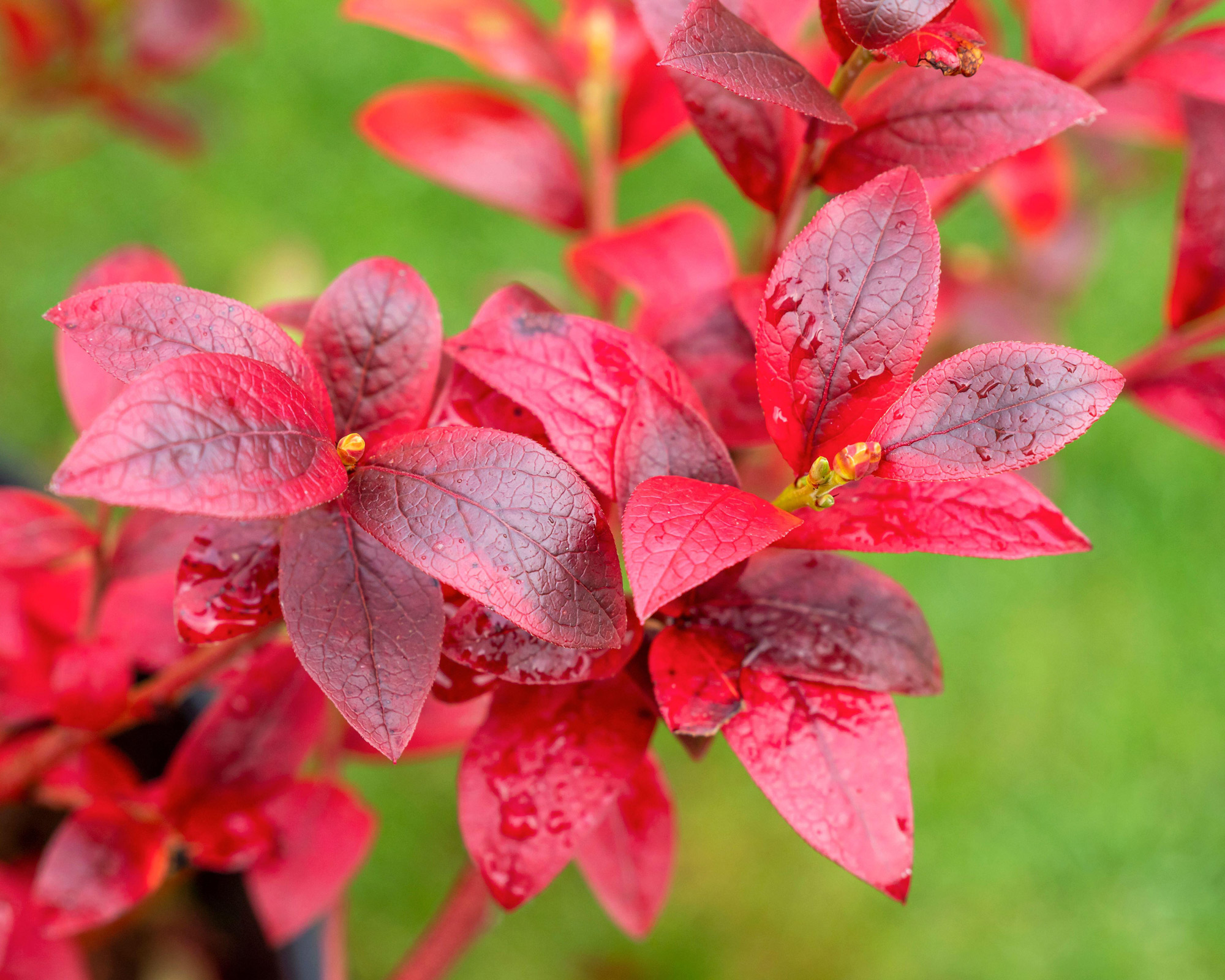
How to grow blueberries: where to start
When learning how to grow blueberries, the first thing is to consider the best spot for your plants. A couple of key factors can determine overall health and yield. As Chris Bonnett of GardeningExpress.co.uk points out, if you get this right, these perennial plants will thrive for years.
First, soil pH is critical. ‘Blueberries need to be grown in acidic conditions,’ says Chris. ‘Ideally, this should be in soil with a pH of 4-5.’
If you aren’t sure about soil types, it’s worth getting a pH kit and identifying how acid, alkaline or neutral your garden soil is. For those who have had success growing acid-loving plants like rhododendrons and azaleas, the good news is that you should have no problems growing blueberries in your soil. However, it is possible to adjust soil acidity by adding sulfur chips or pine bark, if this is done a few months before planting. You will also need a position in your garden that allows for convenient access to rainwater, which is best for acid-loving blueberries.
As well as needing acidic conditions, growing blueberries is far easier with sandy, well-draining soils. If your soil is a claggy, heavy clay variety, you will find that raised garden beds give you a way of controlling conditions underfoot and allowing for better drainage. Alternatively, don’t rule out large containers. And look for a sunny spot for your blueberries. While a little shade is ok, they respond best to a south-facing or east-facing spot. Give your blueberries at least six hours of sunshine daily, and preferably more.
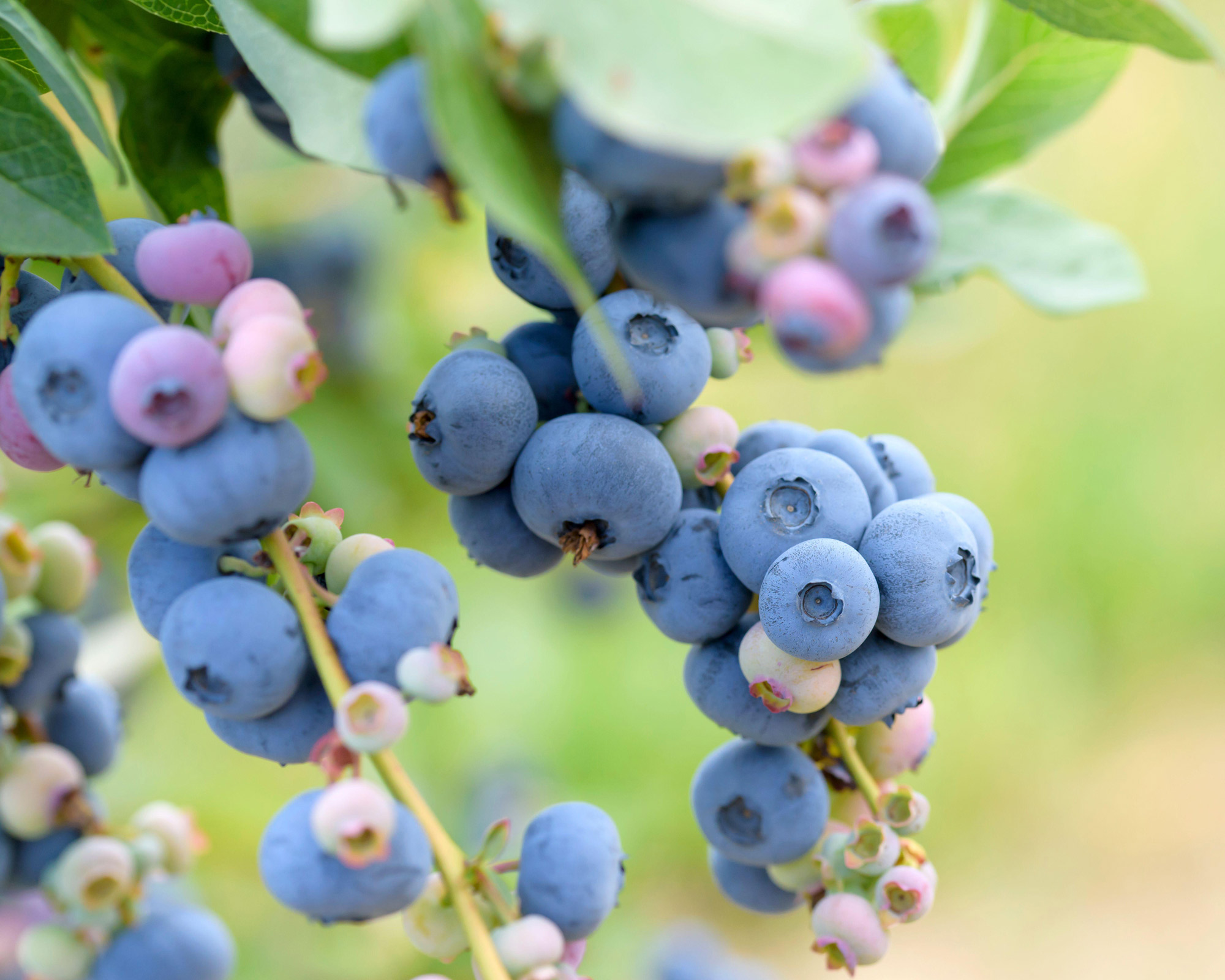
When to plant blueberries
Timing can make a difference when knowing how to grow blueberries – but it doesn’t necessarily follow that you only have a narrow window of opportunity for planting. Traditionally, experts encourage you to plant blueberry plants when they are dormant between fall and early spring, but the reality is that you can be a bit more flexible if you are careful, as Chris Bonnett points out. ‘Essentially, you can plant blueberries at any time of year, as long as the ground isn’t frozen.’
This makes blueberries some of the best low maintenance shrubs for planting in terms of the gardening calendar. That said, of course, the variety of blueberry plants you choose will have some bearing on ideal planting times, so pay close attention to any advice you receive when you buy yours. Flowering times can vary from breed to breed, and being aware of potential frost pockets helps both with selections and planting times. For instance, Amateur Gardening’s Lucy Chamberlain advises choosing a late bloomer such as ‘Bluejay’ if your area is susceptible.
The age of the plant you buy has some bearing on when you can plant. Also, whether you buy in containers or as bare-root plants may influence planting times. Most experts recommend that the best blueberries for planting are two to three years old. Whenever you plant, get them in the ground within a couple of days of buying them.
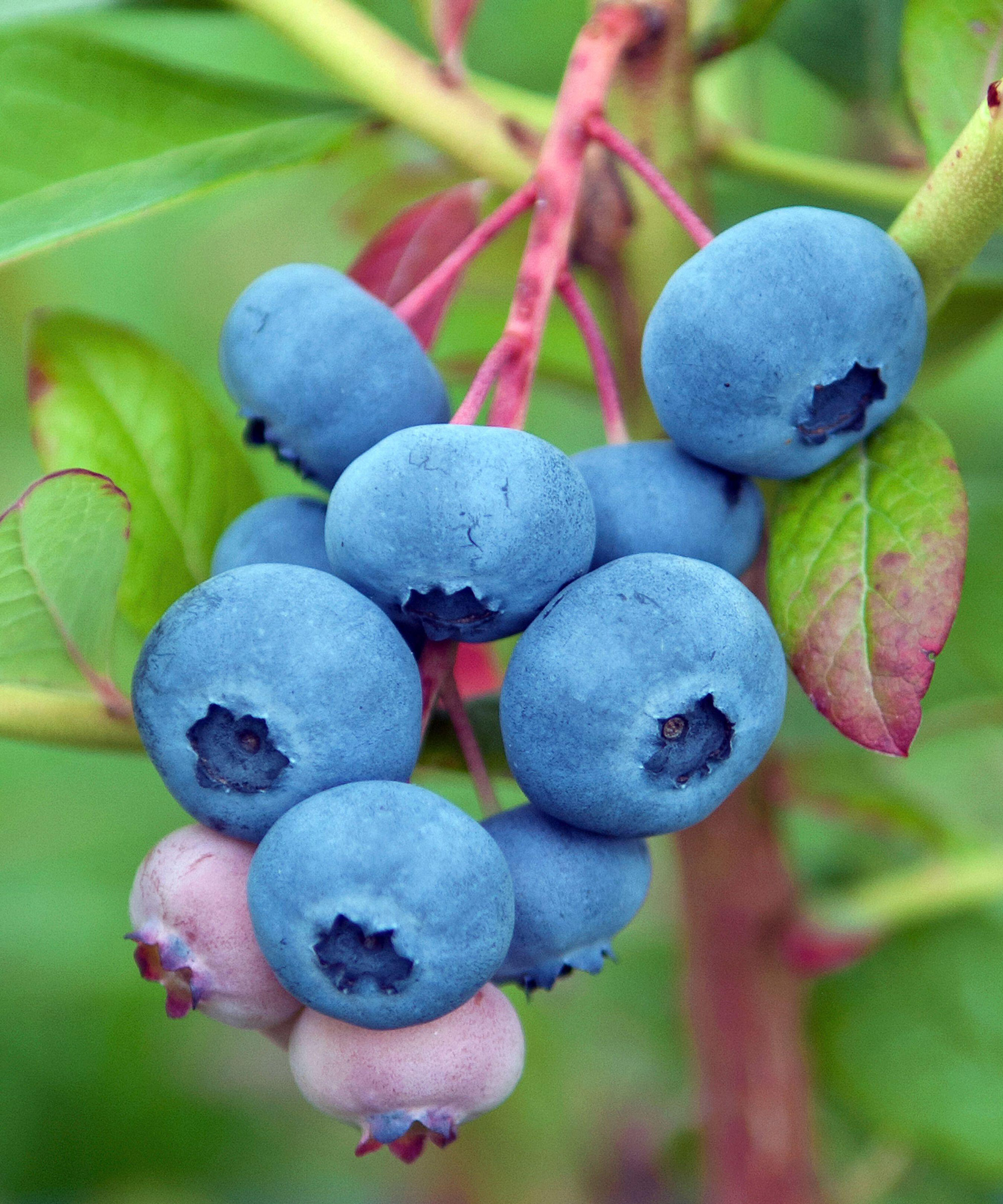
How to plant blueberries
As long as you have made sure the soil pH is ok, all you need to do by way of prep is get rid of weeds around the planting site.
It’s also good to give the earth a little boost with some compost or organic matter. If you can add some ericaceous compost, this will enhance planting conditions for the plant in its first few months in the ground. Just avoid adding anything that could make the pH more alkaline, such as mushroom compost, for example.
Then follow these steps for successful planting:
- If planting a container-based blueberry shrub, dig a hole a bit bigger and deeper than the pot. Add a little compost to the base.
- Water the plant, then tip it out of the pot and place it in the hole. If planting a bare-root plant, unfold the roots and place the root ball centrally in the hole.
- Firm in and water. Add a mulch of bark, pine chips or similar.
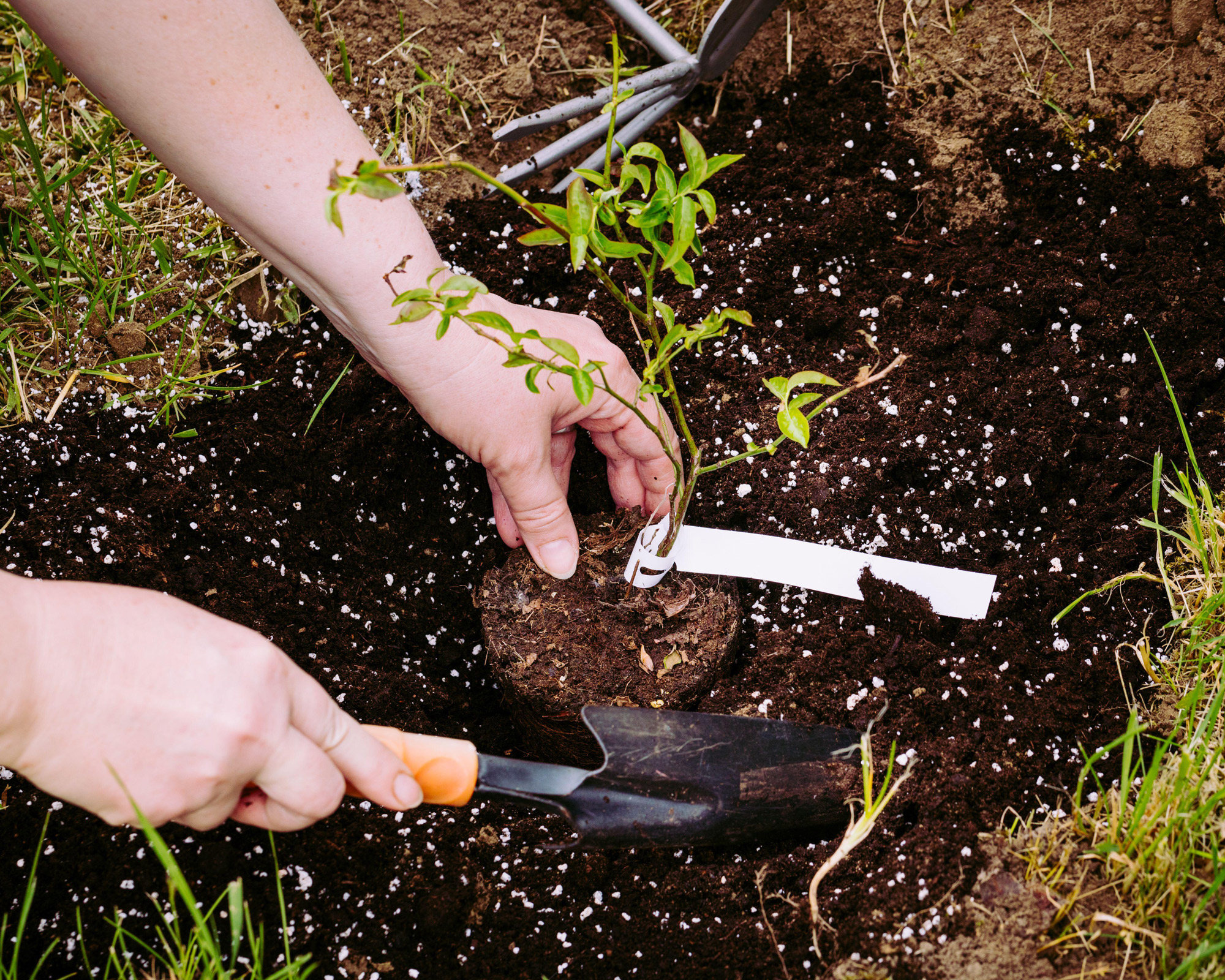
How to grow blueberries in pots
As long as you have the right soil, knowing how to grow blueberries is pretty straightforward. But if you are struggling with your soil, all is not lost. You can grow many different varieties of blueberries in containers. So if you only have a small patio or balcony, or are looking for a colorful and edible addition to your container gardening ideas, these plants can still thrive. You still need to maintain acid levels, but you may find this is easier to do in a container-based environment. Use ericaceous compost and add an ericaceous liquid feed during the growing season.
Otherwise, the same rules apply with blueberries as with any fruit in pots – make sure they receive adequate sunshine and that compost is never allowed to dry out. As with ground plantings, be sure to use rainwater to keep moisture levels and pH levels well balanced.
Use a container big enough to house your plant; 12in (30cm) wide is generally fine. Ensure good drainage in the base of the pot. It’s a good idea to repot every two years, and top-dress the compost in the container. Cover with fleece and bubble-wrap pots to protect them from cold snaps in winter.
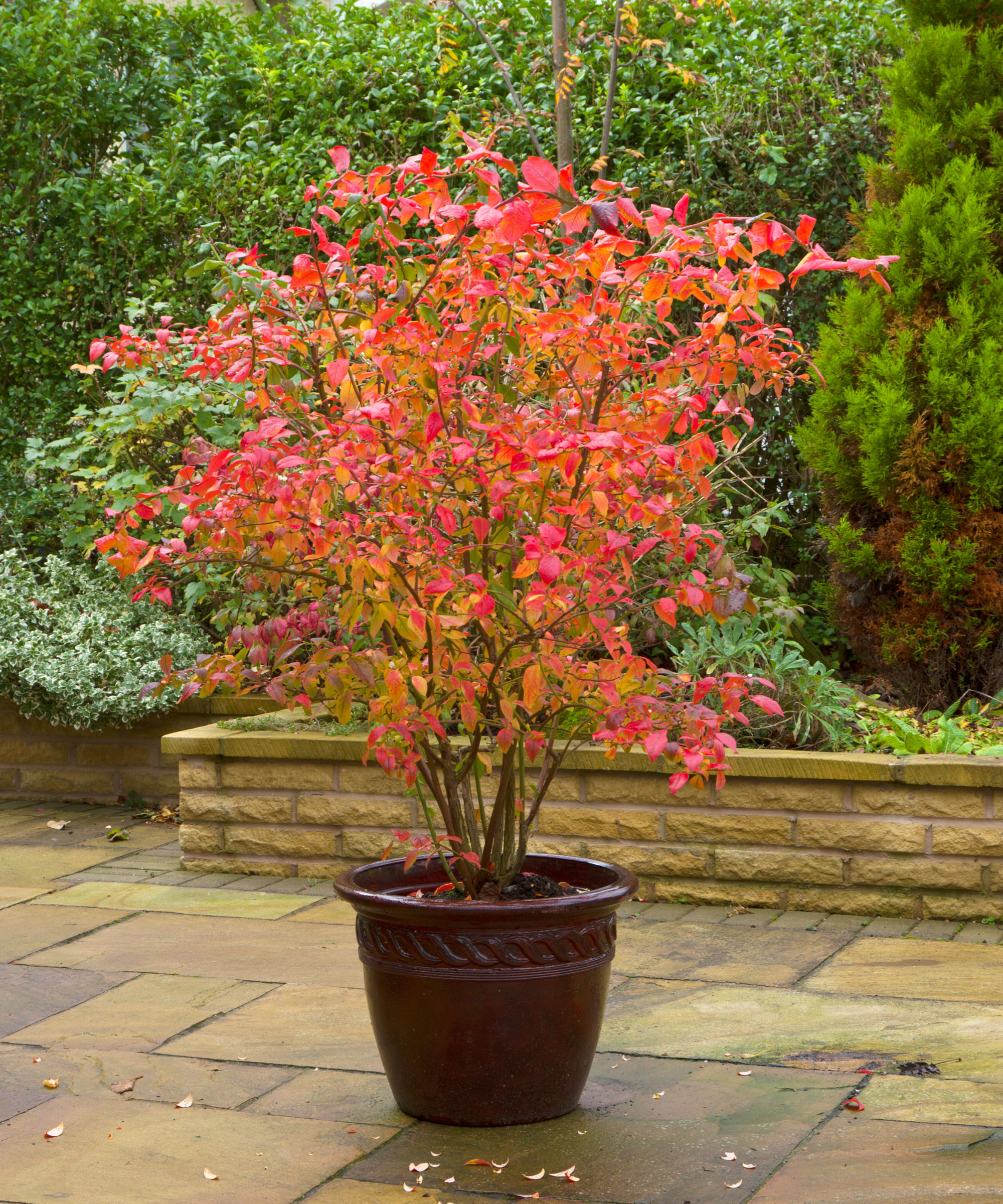
Care tips for blueberries
Learning how to grow blueberries relies on very few practical considerations. The essentials are good watering, feeding, mulching and a little light pruning where necessary. Chris Bonnett advises watering at least once a week through the growing season, being sure to use rainwater to maintain the acidity of the soil. Lucy Chamberlain adds that placing seep hoses underground can help give your blueberries the best weekly dousing.
During the flowering and fruiting season, add a liquid ericaceous feed; Lucy suggests an azalea fertilizer for optimum pH levels. However, it’s best not to fertilize in the first year after planting.
A good annual ericaceous mulching of pine chips, shredded conifer or bark will preserve moisture levels in a way that is especially suited to blueberries.
You shouldn’t need to trim blueberry plants straight away, but after the first few years, Lucy recommends pruning in spring. Aim to remove a third and cut old stems back to the base. ‘Fruit is most prolific on two-to-three-year-old wood,’ says Lucy.
Finally, protect those precious fruits when they start appearing as they will attract the interest of your feathered friends, says Chris. ‘Once the berries start to ripen, you’ll need to keep the hungry birds at bay. The most effective way to do this is to cover the plants with a net or to use a scarecrow.'
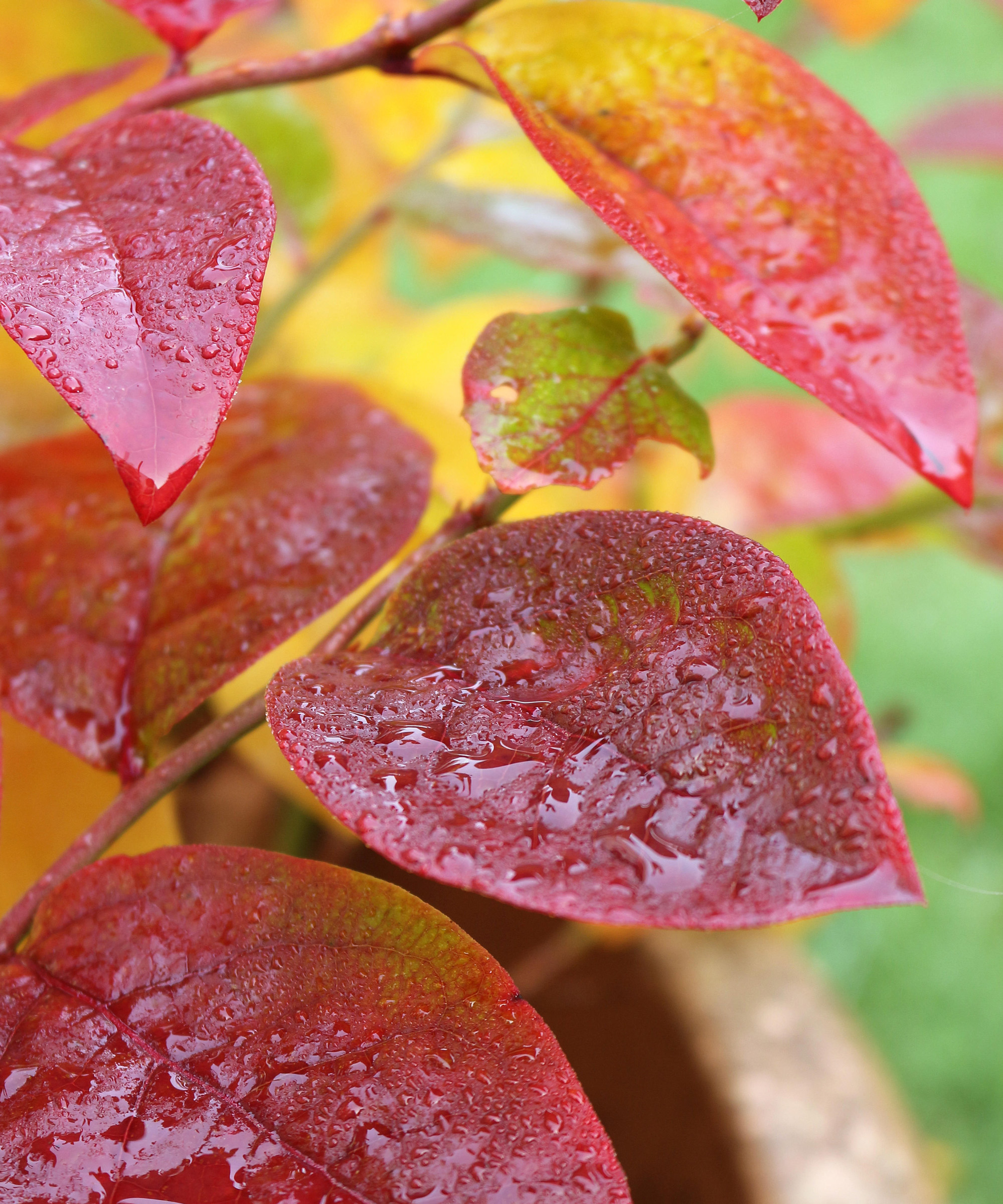
What to grow with blueberries
When learning how to grow blueberries, try to bear in mind that there is safety in numbers. So the number one best thing to grow with your blueberry plant is another blueberry plant! Treat yourself to more than one variety and put them together, and you have a better chance of success, as Lucy Chamberlain points out. ‘Though one blueberry will crop by itself, more berries will set if bushes are cross-pollinated by a different variety of the same species,’ says Lucy. Growing two or more varieties together also means you can enjoy more weeks of berries, particularly if you get both early and later-maturing breeds (and they share a period of flowering).
You may also wish to explore companion planting to boost the potential of groups of edibles and ornamental plants. This is fine, as long as any plants you place nearby are not likely to compete for the nutrients in the ground – and as long as they are not likely to mind the acidic soil pH. Herbs like thyme and basil are not phased by these pH levels and can combat weeds. Growing blueberries near a pollinating shrub such as buddleja, lilac or daphne can also help boost their fruiting potential.
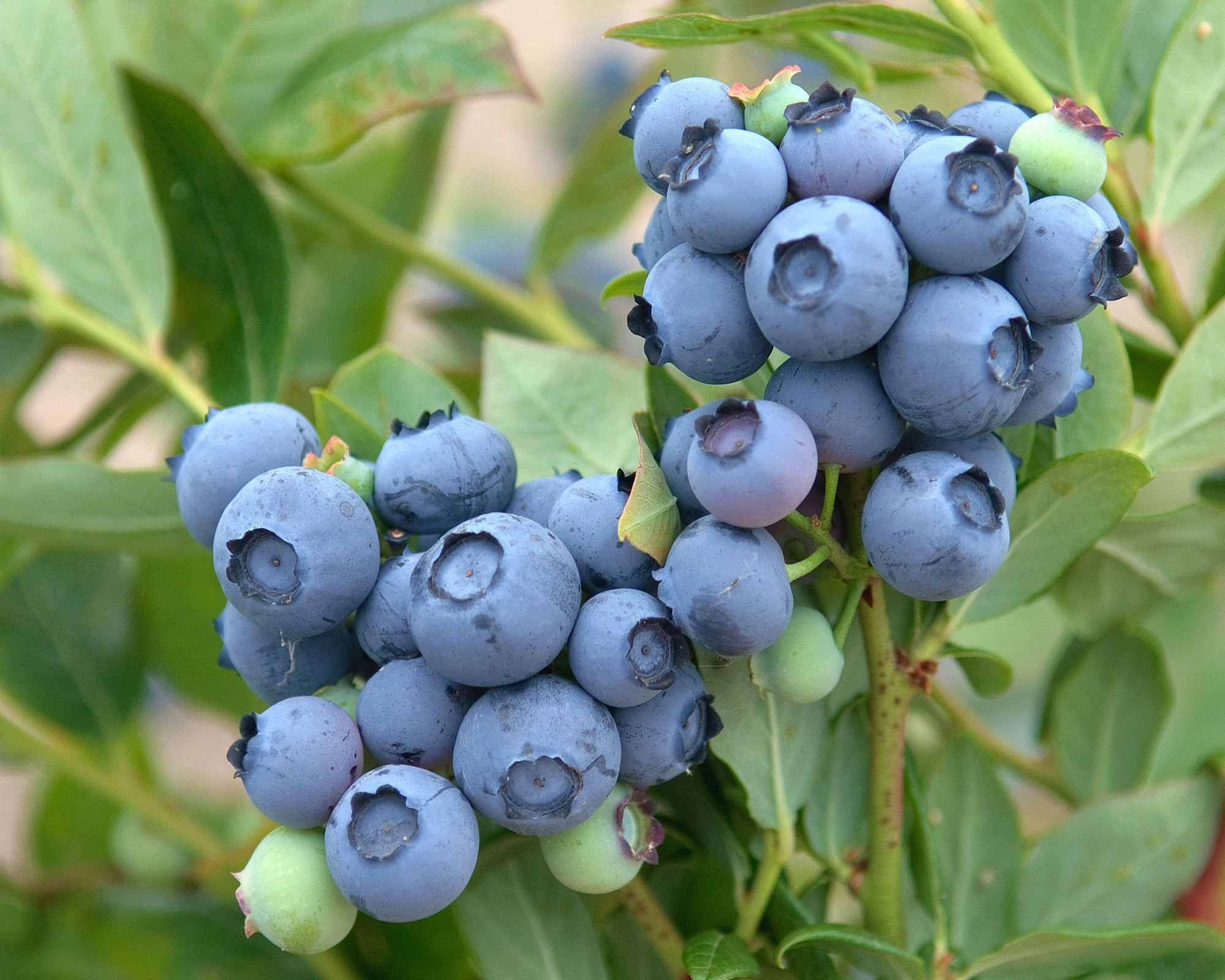
Problems growing blueberries and how to solve them
Your biggest problem when mastering how to grow blueberries will be deterring birds, says Chris Bonnett. Pigeons have a special fondness for the fruit and leaves, and many other bird species will nibble on young crops. You can keep this in check with the help of strong mesh netting and bird-scarers, and preferably both.
You may also run into issues with aphids, so keep an eye out for sticky honeydew on young shoots. If you know how to get rid of aphids, it is possible to keep this in check.
Fungal infections like powdery mildew and rust can be an issue – look for discoloration and white deposits on the leaves. This is more likely if you don’t give plants ample space, hydration and good airflow. So make these a priority, especially if you are growing blueberries together in groups.
Yellow leaves may be a sign of chlorosis, which means your soil pH is not acidic enough. Take steps to adjust the levels if you are worried.
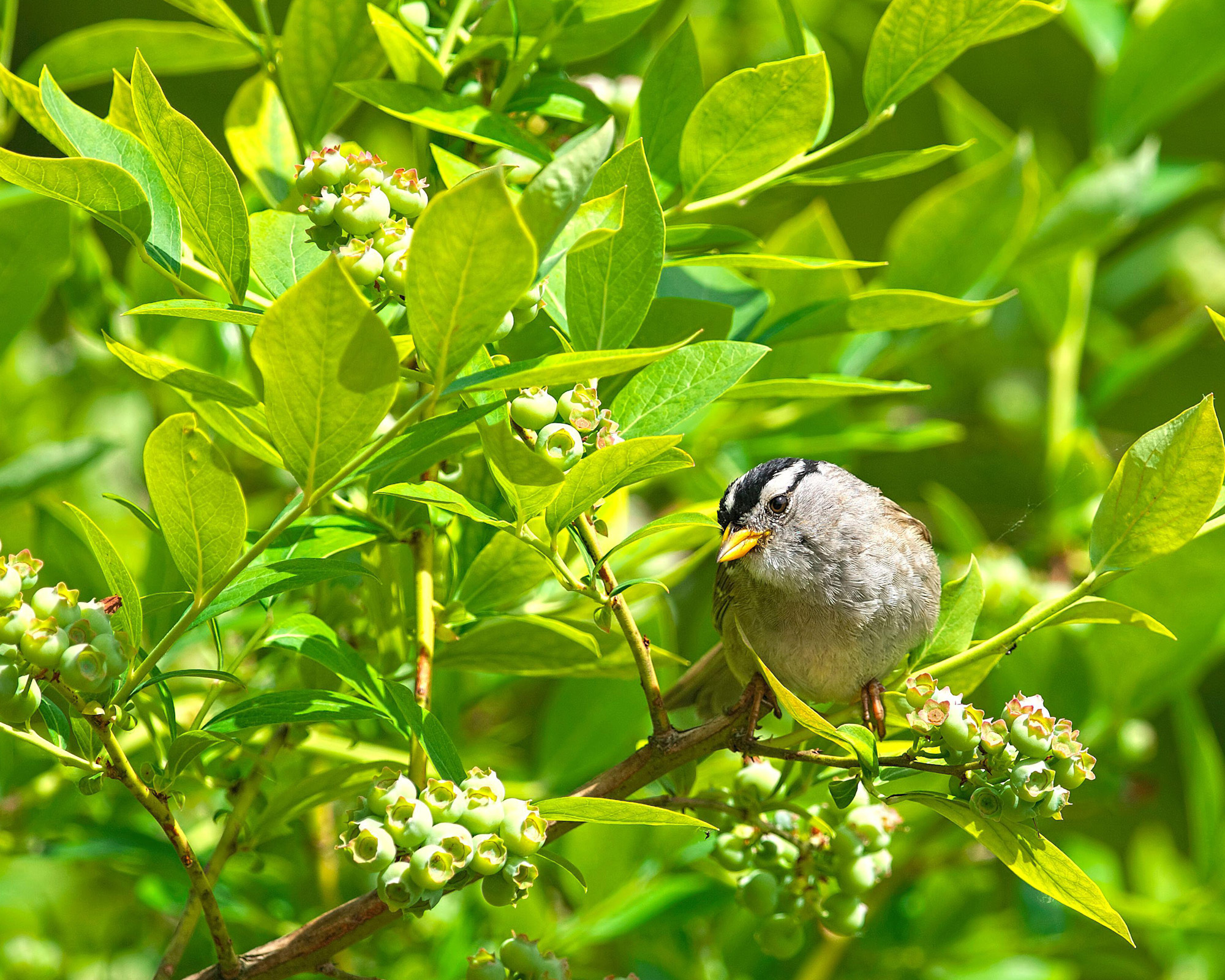
When should you harvest blueberries?
One of the key skills when learning how to grow blueberries is patience. While you will eventually be blessed with an abundance of fruits, you might feel disappointed if you are expecting a bumper crop in the first year after planting. You may see a few berries, but don't be put off if it takes a while to deliver. These edible plants may not be fast-growing shrubs, but within a couple of years, things will turn around.
Once your blueberries are well established, they should be fruiting up a storm in summer. Depending on the variety, you can expect to be picking between early summer and early fall.
‘Fruits ripen over long periods. Pick every few days and they should come away in your hand,’ says Lucy. Several experts agree that blueberries tend to be at their sweetest a few days after turning blue, so check your plants daily, as berries start to color up. If you can’t eat all your berries at once, they keep in the refrigerator for a week, and also freeze well for several months.
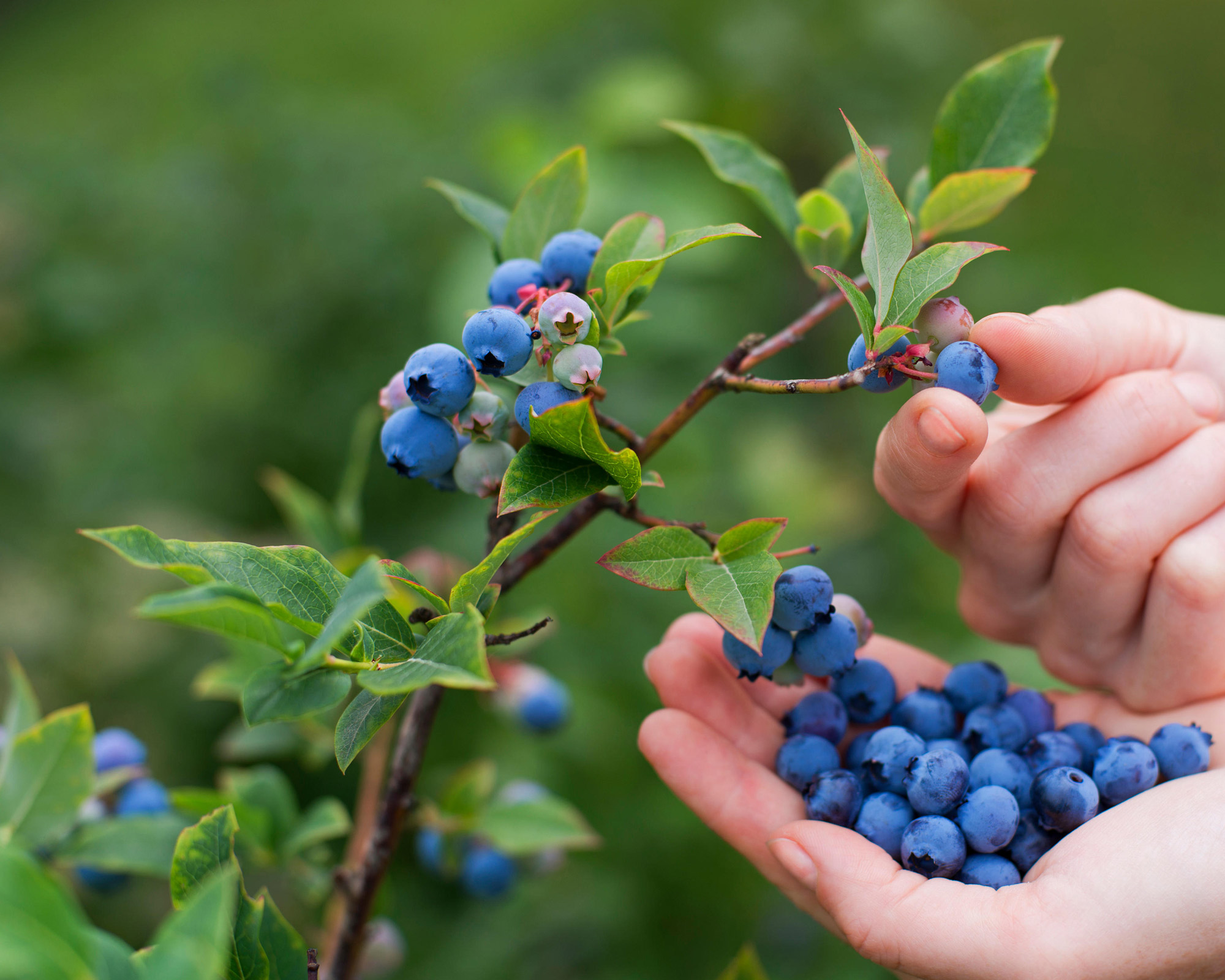
Can you grow blueberries from seed?
Once you have mastered how to grow blueberries from planted shrubs, you may be keen to grow some more. Gardeners wanting to get free plants from existing shrubs can propagate by taking softwood cuttings in spring or hardwood cuttings at the end of winter, and they should root within a few months.
However, you can also grow blueberries from seed. Here’s how:
- When you plant your blueberry seeds will depend on the variety you buy, so always check the seed packet. Most are sown indoors from mid-fall to late winter. Or, take seeds from fruits frozen for three months first (thaw and strain them before planting).
- Sow seeds into small pots of moist, acidic compost and sand. Lightly press seeds and cover with a fine layer of compost. Put them on a sunny windowsill or pop them into a propagator at 68°F (20°C). Keep them moist. Germination may take up to a month.
- When your plants are big enough to handle (2in/5cm), move them into their own 12in (30cm) pots and keep them in a sheltered spot outdoors. By spring, they should be big enough to transplant into garden beds or their final growing containers.
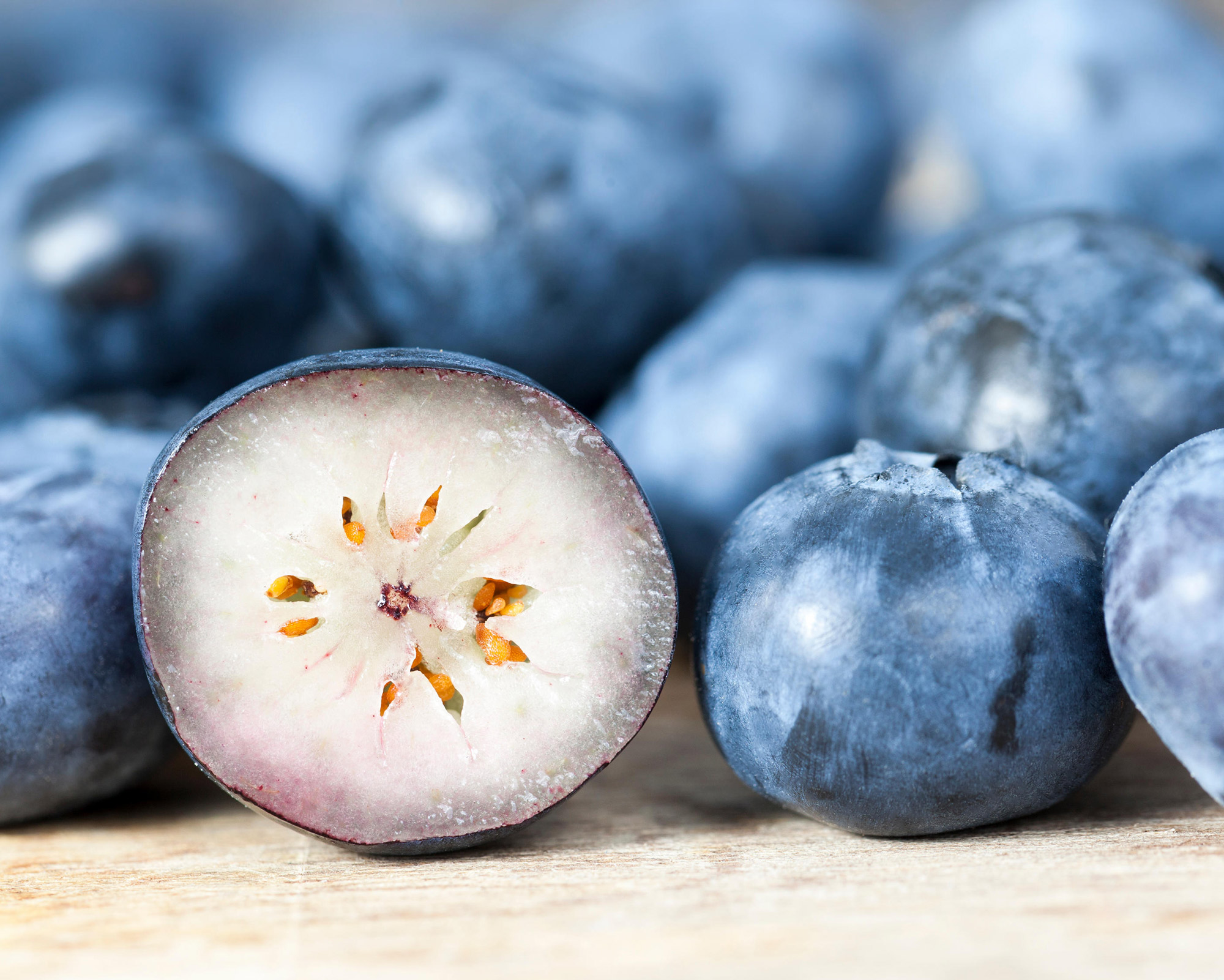
Are all blueberries blue?
Blueberry plants will introduce a gorgeous array of unique, dusky-indigo tones to your edible garden. Yet despite the name, new breeds are making it possible for you to grow blueberries that aren’t even blue. So if you are fond of cultivating raspberries and strawberries and would like to match your color palette, why not try some of the new ‘pink’ blueberry breeds? Super-sweet ‘Pink Sapphire’ and rosy ‘Pink Lemonade’ both allow you to add a splash of rich warmth to your plot – but with all the properties that make the classic blueberry so special.
And for something even more unusual, experts are singing the praises of the Saskatoon berry. The pinky purple flesh has a superb fragrance and even the seeds are delicious, evocative of a mild almond. Hailing from Canada, it is fast becoming one of the most charming and exciting new additions to the berry kingdom – and is definitely worth a punt if you are looking for a twist to the conventional blue brigade.
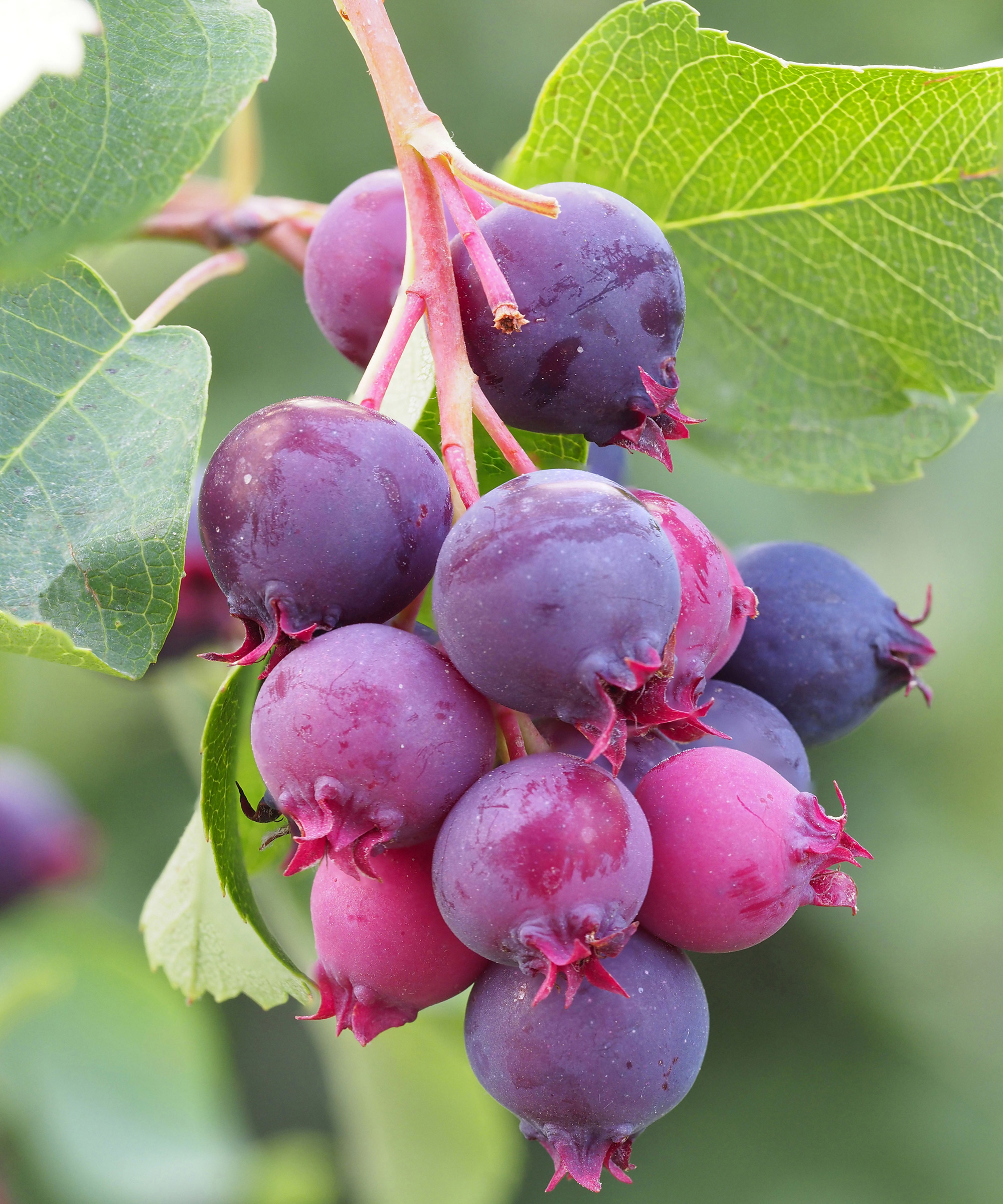
How long do blueberries take to grow?
As mentioned, growing blueberries is a job that rewards the patient gardener. It is unlikely that you will see a massive crop before your plant has had two or three years to get established in the garden. Before that time, it is advised that you try to resist allowing crops to come through – remove flowers in the first year, at least, so that the shrub has time to properly focus its energies on developing fully first. At the three-year mark, you should be seeing some fruity returns for your patience.
Once you know how to grow blueberries, you will see that different varieties can deliver varying results in terms of shape, size, volume and taste – and some hit their stride sooner than others. Grouping different varieties together can boost your chances of enjoying a bigger yield sooner. That said, you may have to wait as long as six years for prolific harvests. Don’t despair: if you try your hand at pruning shrubs three years in, you will find that plants respond well.
As for eventual shrub size, it can take 10 years for blueberries to mature fully. The main thing is that you can look forward to a more generous blueberry stash in the years to come.
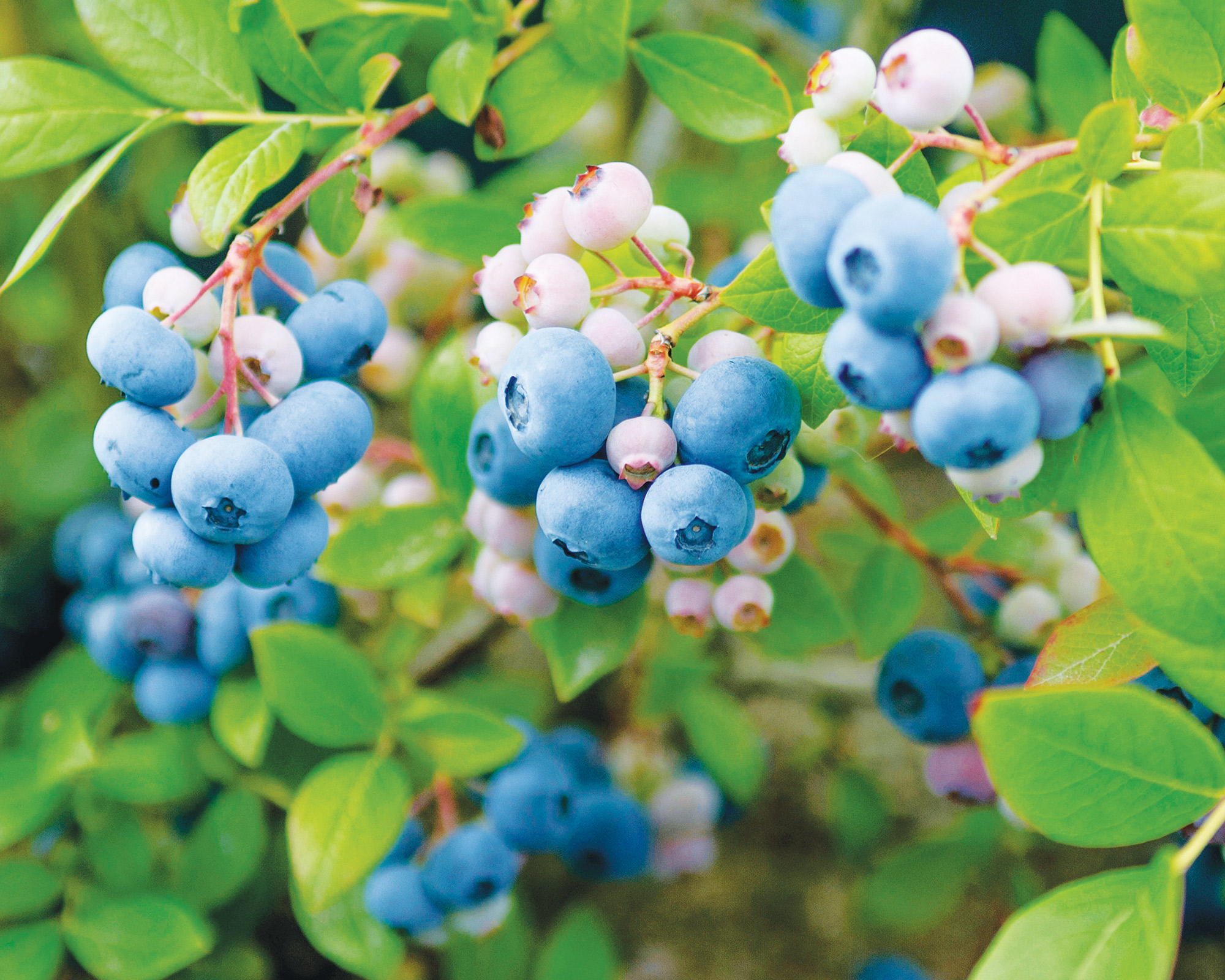
Where to buy blueberries
Whether you opt for a nursery or website, you can get highbush, lowbush and hybrid shrubs as young container plants or bare-root options. Check the age of the plant, as one to three years is recommended.
You can also buy early, mid- and late-flowering varieties. It is advised to get two or three with different fruiting times to extend your harvest period.
What's more, you can buy many varieties as seeds if you wish to start from scratch.
There’s a huge range available online, so use our quicklinks below to start growing blueberries in your own backyard.
Where to buy blueberries in the US:
- Shop blueberry seeds at Amazon
- Shop blueberry plants at Bluegrass Nurseries
- Shop blueberry plants at Burpee
- Shop blueberry plants at DiMeo Farms
- Shop blueberry plants at Walmart
Where to buy blueberries in the UK:
- Shop blueberry plants at Amazon
- Shop blueberry plants at Crocus
- Shop blueberry plants at Dobies
- Shop blueberry plants at Frank P Matthews
- Shop blueberry plants at Mr Fothergill’s
- Shop blueberry plants at Marshalls
- Shop blueberry plants at Roots Plants
- Shop blueberry plants at Suttons
- Shop blueberry plants at Thompson & Morgan


As assistant editor of Amateur Gardening magazine, Janey's gardening passion was fostered from an early age, when her amazing mum had her deadheading hydrangeas, mulching roses, and propagating strawberry plants from runners for school open days. She's also taken part in lots of conservation and rewilding projects for the RHS and TCV as a way of exploring her horticultural horizons.
